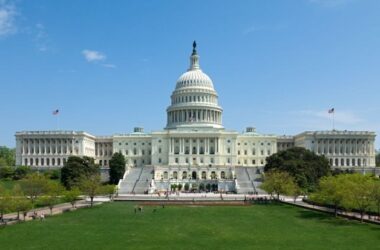By Jim Workman
West Virginia Press Association
CHARLESTON, W.Va. — Investing in tourism and economic development would give West Virginia a shot at combating many issues ail the Mountain State, according to Commerce Secretary Woody Thrasher.
The Department of Commerce made a presentation for its proposed 2019 budget for the House Committee on Finance at the State Capitol on Friday morning.

WV Commerce Secretary
“We can create more jobs and create tax revenue that will give us the funds to deal with the issues we face everyday – opioid issues, teacher pay raises, salaries for state workers – all of the things that need attention,” Thrasher said. “At the end of the day, you have to have money to address them.”
Chelsea Ruby, director of Division of Tourism, addressed the $14 million general revenue improvements requested for tourism. The bulk is earmarked for improving the state’s image and the public’s awareness of the state’s offerings.
Broken down specifically, $2.5 million would go toward marketing, $3 million to brand awareness, $4 million to brand promotion, $1 million to public relations, $2 million to events and sponsorships, $1 million to state parks and recreation advertising and $500,000 to industry development.
Thrasher and Ruby both pointed to the “glaring” difference in budgets compared to tourism offices in competing states.
“We have an exposure problem,” Ruby said. “Once people visit West Virginia, their impressions change for the better.”
Those image improvements have benefits beyond dollars and cents, she added.

Commissioner of the Division of Tourism
“Perceptions change,” Ruby said. “There’s even a bump in impressions on our website when people are exposed to a TV advertisement (for West Virginia tourism). It’s a huge part of our economy.”
Ruby said that a recent study shows 86 percent of first time tourists in West Virginia have returned for a second stay.
Thrasher said money spent in tourism is “an investment,” more than an expense.
Additionally, the Development Office seeks $17.2 million for a strategic investment program, $8.5 million for a site readiness program, $5 million for an infrastructure and economic development program and $4.3 million for sales and marketing in its general revenue.
“We have to make it more attractive to do business in West Virginia,” said Kris Hopkins, executive director of the West Virginia Development Office. “The companies we deal with are not start ups or fly by night companies. They’re going to build somewhere.”
Hopkins applauded recent activity from the state legislature that has improved the development office’s standing.
“We now have a seat at the table that we otherwise may not have had,” Hopkins said. “The question is, ‘Can we stop there? What happens if we don’t do anything else?’ I don’t think we can stop. We still have to go tell our story.”
Hopkins reported that feedback tells his office “the changes you’ve made in West Virginia really moved the needle,” he said.
“But the problem is no one knows about it,” Hopkins added. “The good news is we have a fix for that, in marketing. But it takes investment in people, advertising and marketing. It doesn’t get solved sending a flyer or an email. We have to go out and be aggressive and meet with business leaders. No one us is going to tell our story for us. We have to go get the business.”
Site readiness is important Hopkins said, because the majority of businesses looking at West Virginia eliminate the state from consideration before the development office even gets an opportunity to make a presentation.
“We get eliminated based on the information currently available to them,” Hopkins explained. “The problem is, we currently don’t have the inventory of sites and buildings and utilities on our information out there. We need to invest some time and effort getting that information, environmental clearances, all of the things that will position us and better posture us to respond to opportunities.
“Then, we can take these sites out to the market,” Hopkins added. “It reduces the risks to the business owners and allows us to act with more speed.”
Hopkins said currently West Virginia is one of about 20 states that is without a site certification program, putting it at a significant disadvantage.
Thrasher said that a Toyota project that eventually went to Alabama was lost, perhaps because a site readiness proposal was not available.
“I think we would have been competitive,” he added. “Alabama won the project. They had 17 sites that met (Toyota’s) criteria. We have to have an inventory ready if we’re ever going to be competitive.”
While West Virginia economy has depended on its resources in the past, Thrasher said the key going forward is to create more streams of revenue.
“What we have not done in West Virginia is diversify,” Thrasher said. “These types of funds we’ve mentioned today work toward diversifying our economy.
“You’re going to get money by generating business activity,” Thrasher stated. “It doesn’t come out of thin air. This is how you do it – by investing and diversifying our economy.”





